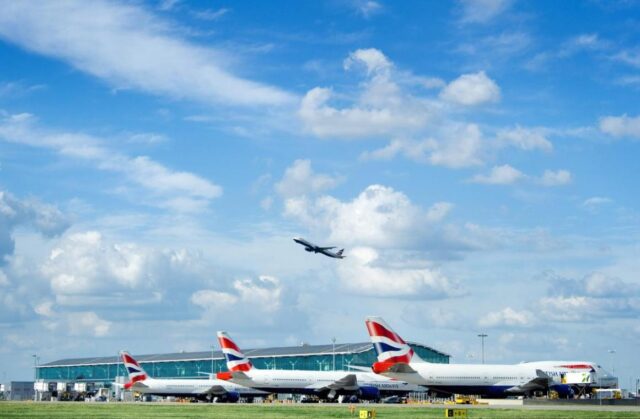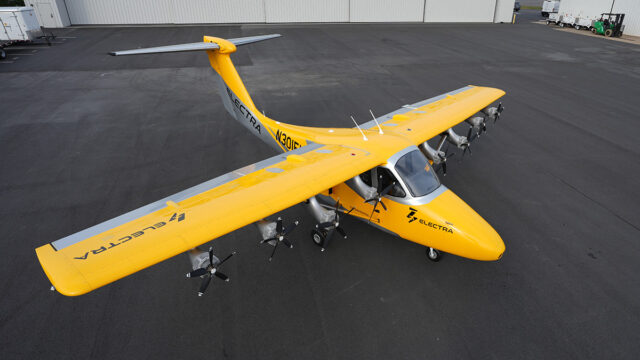Lufthansa Technik wants to install shark skin-inspired film on the Airbus A330: Here’s why

August 14, 2025

German MRO giant Lufthansa Technik is seeking certification to bring its riblet-film AeroSHARK technology to the Airbus A330ceo, a workhorse long-haul type with nearly 1,000 aircraft in service worldwide.
Already making waves on Boeing 777 fleets, AeroSHARK’s expansion to the A330 could deliver substantial environmental and financial savings.
“The A330ceo’s widespread use and long operational life make it an ideal candidate,” said Andrew Muirhead, Vice President of Original Equipment Innovation at Lufthansa Technik. “The potential for cost savings and environmental benefits is substantial.”

The A330ceo family remains a mainstay of long-haul networks, and many operators plan to keep their aircraft flying well into the 2030s. An efficiency upgrade that can be installed during routine maintenance offers a compelling business case.
Lufthansa Technik is now pursuing a Supplemental Type Certificate (STC) for both the A330-200 and -300. The process involves flight testing, performance analysis and safety validation, with completion targeted for 2026.
Without the STC, airlines cannot legally operate with the modification installed.
What is AeroSHARK and how does it work?
The science behind AeroSHARK is rooted in the natural engineering of the great white shark. Researchers have found that the alternating high and low ridges on a shark’s skin, called denticles, reduce the pressure drag by controlling flow separation, especially as the animal switches between slow and high-speed swimming.

Research by Tokyo Institute of Technology’s Hiroto Tanaka shows high ridges work best at low speeds, while alternating high-low ridges excel at high speeds, offering benefits across the shark’s full swimming range.
In AeroSHARK films, riblets just 50 micrometres high are engineered to mimic this effect, smoothing airflow over the aircraft and reducing resistance.
On an aircraft, the riblets are precisely aligned with the airflow along the fuselage and engine nacelles, reducing skin-friction drag and, with it, fuel burn.
In cruise flight, the modification delivers around a 1% cut in fuel consumption and CO₂ emissions. That may sound modest, but applied across a global long-haul fleet, Lufthansa Technik estimates it could save nearly five million tonnes of kerosene annually.
AeroSHARK in service: Who’s already using it?
Since its debut in 2021, AeroSHARK has been fitted to 29 aircraft, all Boeing 777 variants:
- SWISS – All 12 of the airline’s Boeing 777 aircraft were fully modified by May 2024, the first time an entire long-haul fleet had been optimised with the technology.
- Lufthansa Cargo – By fitting all 10 of its Boeing 777F freighters, Lufthansa Cargo estimates it has saved 4,000 tonnes of fuel and nearly 13,000 tonnes of CO₂ annually, equivalent to 53 freight flights from Frankfurt to Shanghai.
- Austrian Airlines – Installed AeroSHARK on Boeing 777-200ER; over the coming four years, the technology is expected to save around 2,650 tonnes of fuel and over 8,300 tonnes of CO2
- LATAM – The first airline in the Americas to adopt AeroSHARK, LATAM reported approximately 1% fuel savings in real operations since 2023. Four more Boeing 777-300ERs are being retrofitted, potentially saving 2,000 tonnes of fuel annually.
- ANA – Japan’s All Nippon Airways has equipped both freighter and passenger versions of the Boeing 777 with AeroSHARK, a global first.
- EVA Air – The Taipei-based airline became the first in Asia to commit to the technology, aiming to fit all nine of its 777 freighters. Projected annual savings: over 2,500 tonnes of fuel and nearly 8,000 tonnes of CO₂.

AeroSHARK is a standout example of biomimicry in aviation, but not the only one.
The “Bird of Prey” concept from Airbus borrowed from raptors to design wing tips and tails aimed at reducing noise and fuel burn, while morphing wings inspired by bird feathers could adapt in flight for optimal aerodynamics.
Even cabin climate systems have taken cues from termite mounds and beetle shells for passive cooling.
By extending AeroSHARK to the A330, Lufthansa Technik is proving that nature’s engineering, honed over millions of years, can offer practical, certifiable gains today.
With fuel prices volatile, emissions targets tightening, and public pressure mounting, solutions like AeroSHARK hint at an aviation future where more aircraft borrow their best tricks from the natural world.
















